Texas is the second-largest state in the United States, boasting more than 260,000 square miles and featuring coastlines, forests, mountains, and deserts. There is immense wildlife within its borders, including birds. Discover 12 unique blue birds in Texas and learn about their habitats, foraging behavior, and how to attract them to your feeder.
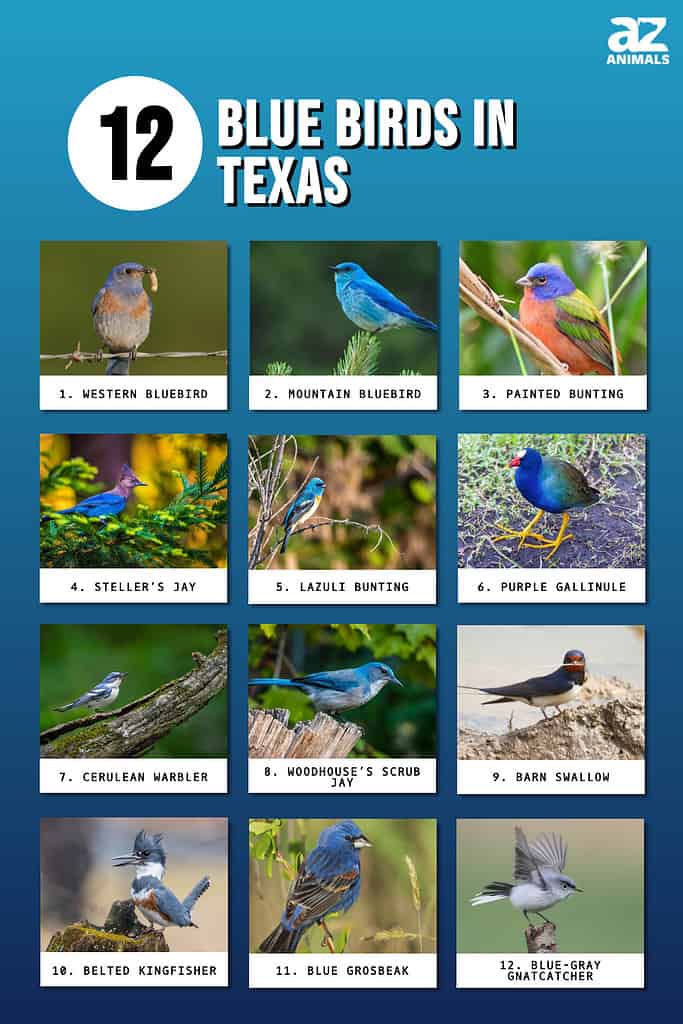
1. Western Bluebird
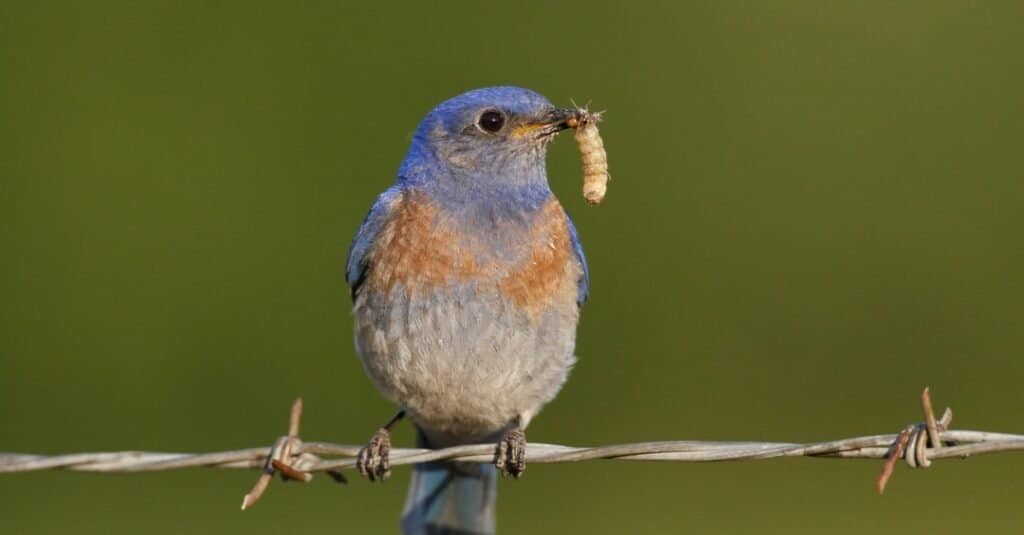
Western bluebirds spend winter in west Texas, where they inhabit farms, brush, and desert.
©iStock.com/mooninwell
Habitat and Range: The western bluebird lives in West Texas primarily during the winter. Although some populations stay year-round. They winter in many semi-open habitats, such as farms, brush, and deserts.
Coloring: They display brilliant blue, rusty red, and gray.
Calls: Soft, stuttering songs and quavering calls are their sounds.
Food and Foraging: They mostly eat berries and insects. They perch from a low post and flutter to the ground to forage. Or they hover over their prey before capture.
Backyard Tip: Hang a platform feeder and fill it with mealworms.
2. Mountain Bluebird
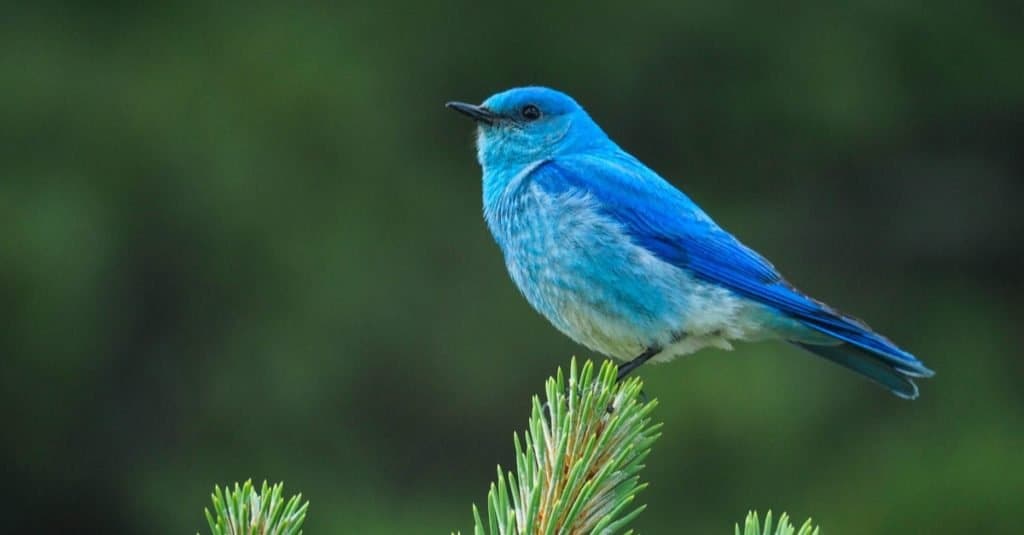
The mountain bluebird is a medium-sized bird weighing about one ounce. They have light underbellies and black eyes.
©MTKhaled mahmud/Shutterstock.com
Habitat and Range: Mountain bluebirds inhabit areas out west, and you can spot them in northwest Texas during winter. Look for them in open, treeless areas, such as barren fields, open grasslands, and deserts.
Coloring: These perfectly blue birds are a blend of sky blue and deep blue, with a bit of white.
Calls: They emit loud, emphatic chirrups and soft, nasal calls.
Food and Foraging: Feeds heavily on insects during summer and berries during winter. They hover over open fields and drop to catch prey.
Backyard Tip: Provide suet balls and mealworms to attract this species.
3. Painted Bunting

Painted buntings breeds across Texas near thickets, clearings, and open woods.
©iStock.com/passion4nature
Habitat and Range: The painted bunting breeds across Texas, especially east Texas, avoiding the most northwestern parts of the state. You will find them and their nests in thickets, woodland clearings, and open woods.
Coloring: These vibrant birds are vivid blue, red, green, and orange.
Calls: Listen for sweet high-pitched notes and soft calls.
Food and Foraging: They consume seeds and insects, foraging mostly on the ground. But you may also find them in low vegetation.
Backyard Tip: Provide millet seeds in a perch feeder.
4. Steller’s Jay
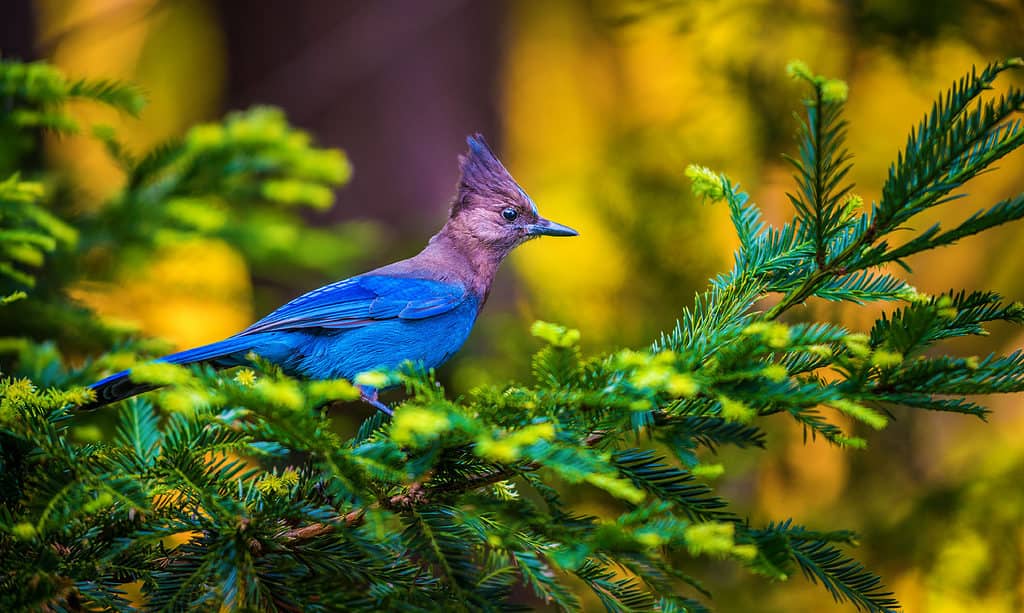
The Steller’s jay lives in the Texas Guadalupe Mountains in pines and Douglas firs. They forage high in the trees.
©iStock.com/kwiktor
Habitat and Range: The Steller’s jay inhabits the very western edge near Mexico and New Mexico borders. These birds live year-round in the Guadalupe Mountains in yellow pines and Douglas firs.
Coloring: Their gorgeous coloring features light blue, dark blue, purple, and charcoal black.
Calls: Their quiet whistles and gurgles and loud “shook, shook, shook” calls are unique.
Food and Foraging: They mainly eat seeds, berries, fruits, and insects. They forage high in trees and occasionally on the ground.
Backyard Tip: They like suet, peanuts, and other large seeds.
5. Lazuli Bunting
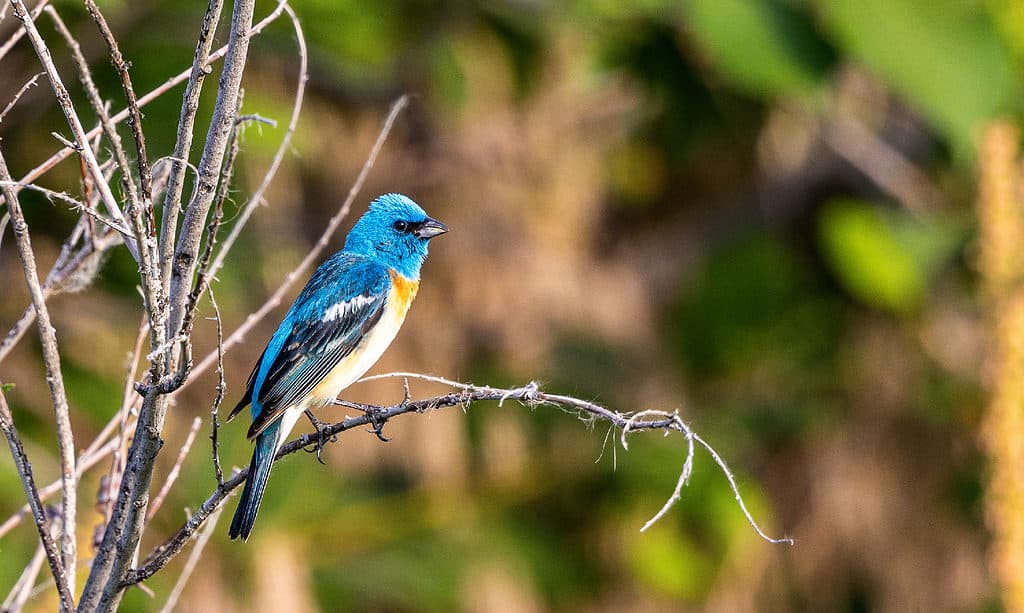
Lazuli buntings migrate through western Texas and stop in brushy areas, weedy fields, and open woods.
©iStock.com/Jeff Edwards
Habitat and Range: Lazuli buntings are not common in Texas but migrate through the western half of the state on occasion. You will likely find them in brushy areas, weedy fields, and open woods.
Coloring: Their bright feathers are brilliant blue, pumpkin, white, and black.
Calls: They emit jumbled squeaky notes and sharp, metallic calls.
Food and Foraging: They forage for seeds and insects on the ground or in low vegetation. You may also see them hovering while looking for insects.
Backyard Tip: Provide white proso millet, nyger, and sunflower seeds.
6. Purple Gallinule
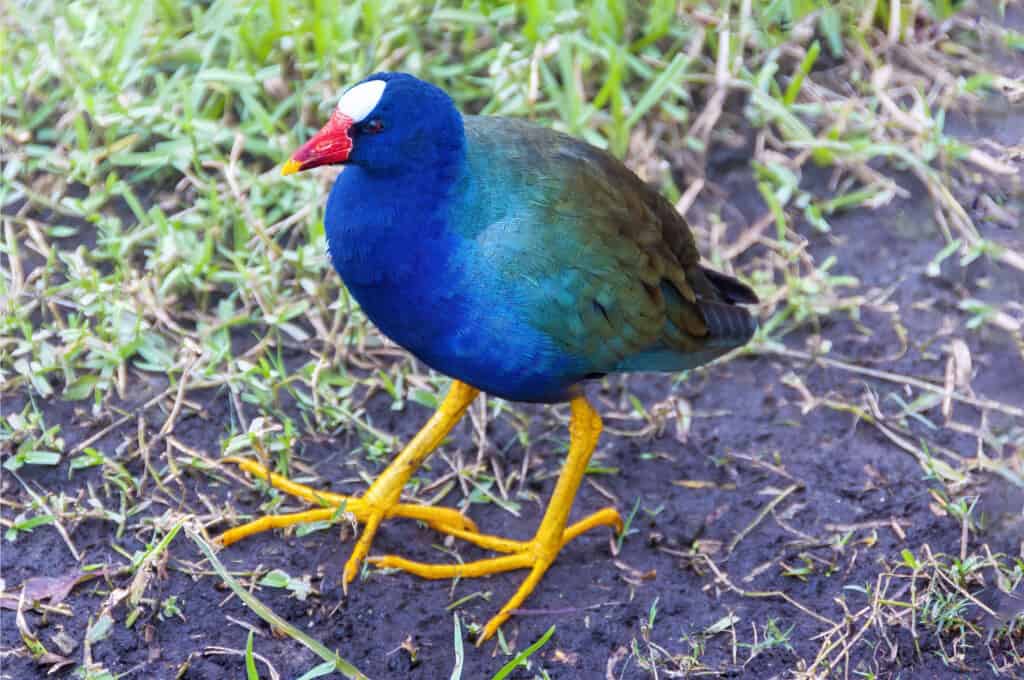
The purple gallinule is a breeder bird in far east Texas in extensive wetlands, like marshes, swamps, and ponds.
©iStock.com/barbaraaaa
Habitat and Range: The purple gallinule breeds in the far eastern side of Texas, near the Gulf of Mexico and the Louisiana border. They live in extensive wetlands, such as freshwater swamps, marshes, and ponds.
Coloring: They are a variety of colors, including sky blue, green, violet, red, indigo, and white.
Calls: These funny birds make henlike cackles and tinny chips.
Food and Foraging: They eat seeds, fruit, aquatic vegetation, insects, fish, frogs, and much more. They typically forage while walking through shallow water covered in vegetation or while swimming.
Backyard Tip: Small ponds with water lilies may attract purple gallinules.
7. Cerulean Warbler
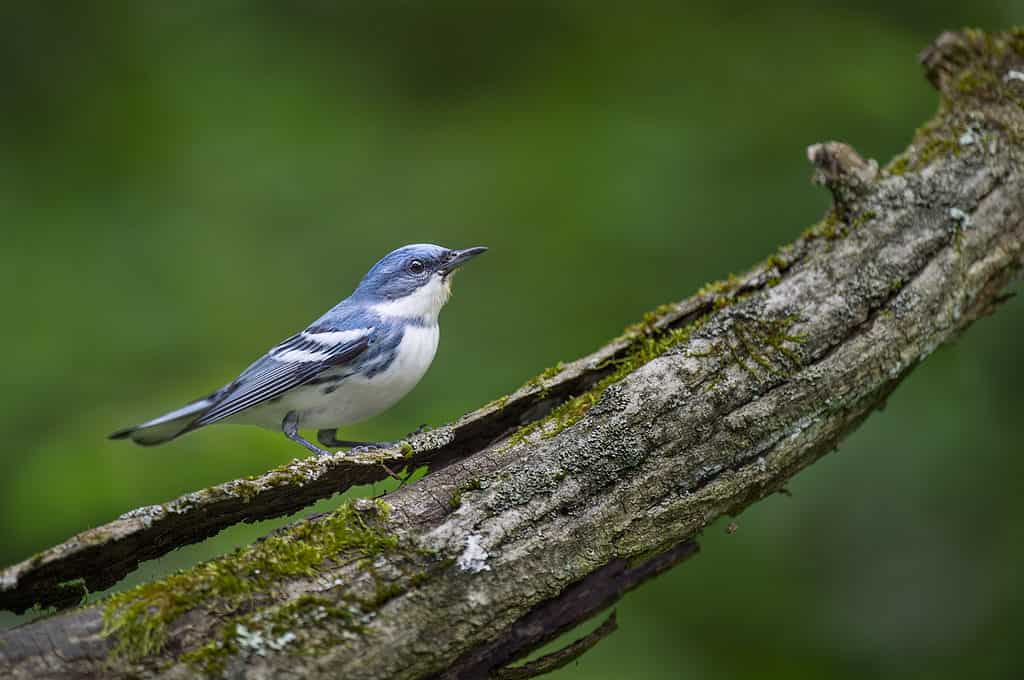
Cerulean warblers migrate in east Texas along the Louisiana border. They primarily inhabit river valleys of deciduous forests.
©iStock.com/ps50ace
Habitat and Range: The cerulean warbler is a common migrant through eastern Texas, primarily along the Louisiana border. You will find them in mature deciduous forests in river valleys.
Coloring: They feature shades of sky blue, white, and black.
Calls: Their buzzy songs and trills are beautiful.
Food and Foraging: They eat insects and forage high in the trees. Observe them busily moving from limb to limb, flipping over leaves and twigs.
Backyard Tip: Warblers are not popular feeder birds, but you can try setting out suet, peanut butter, and mealworms.
8. Woodhouse’s Scrub Jay
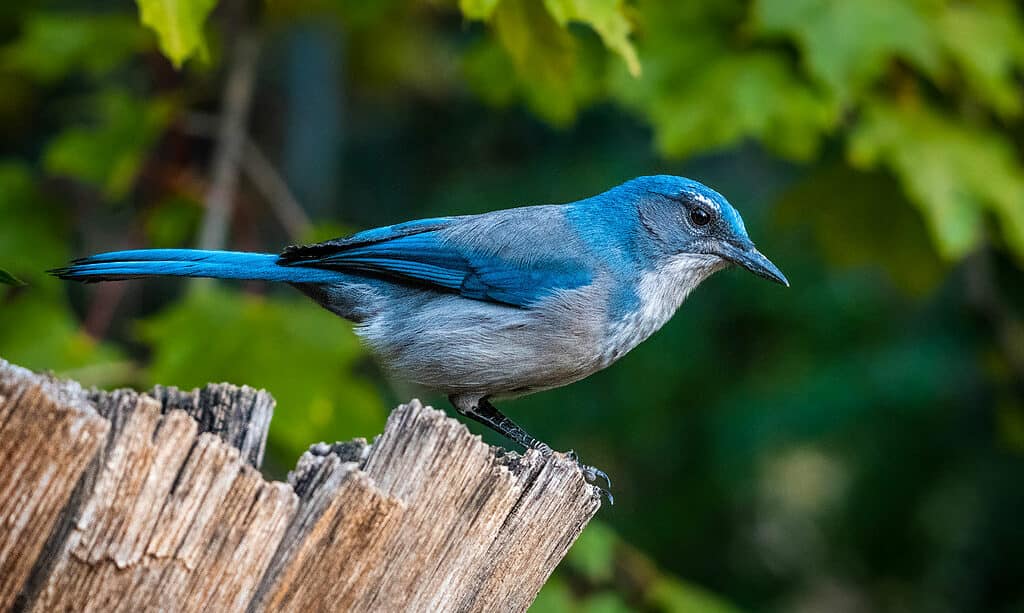
The Woodhouse’s scrub jay is a permanent resident in southwest Texas. Look for them in dry woodlands and oak scrub.
©Eivor Kuchta/Shutterstock.com
Habitat and Range: The Woodhouse’s scrub jay lives year-round in somewhat scattered populations in southwest Texas near the Mexico border. They live in dry woodlands and oak scrub, but you may also see them in suburbs and parks.
Coloring: This bird is a mix of dusty blue and light gray.
Calls: They make soft, sweet notes and “weep” calls.
Food and Foraging: Their diet consists mainly of insects, seeds, nuts, and berries. You will find them foraging on the ground or in trees, alone, in pairs, or in a flock.
Backyard Tip: Plant dense shrubs and provide sunflower seeds and peanuts.
9. Barn Swallow
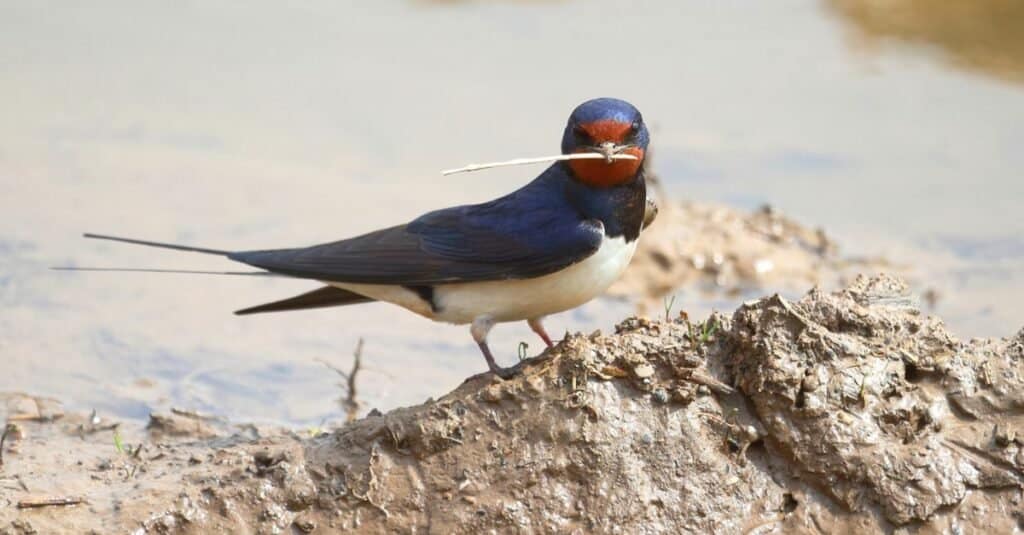
The
barn swallow
lives throughout Texas during spring and summer, making their nests near farms, towns, and buildings.
©PavlovaSvetlana/Shutterstock.com
Habitat and Range: Barn swallows are prolific in North America during the breeding season. You will find them throughout Texas during spring and summer, where they make their nests near farms, towns, and buildings.
Coloring: Their colors consist of cobalt blue, tawny, cinnamon, dark brown, and white.
Calls: These unique birds make twitter warbles and “cheep” calls.
Food and Foraging: They primarily eat insects and capture their prey mid-air by swooping low over water and fields.
Backyard Tip: Place ground-up eggshells in a platform feeder.
10. Belted Kingfisher

The belted
kingfisher
is a permanent resident of Texas in aquatic habitats including streams, ponds, and lakes.
©Harry Collins Photography/Shutterstock.com
Habitat and Range: Belted kingfishers in northern Texas stay there year-round, while Canadian breeding populations winter in southern Texas. These birds live around nearly any body of water, including lakes, bays, coasts, streams, and ponds.
Coloring: Their feathers are bluish-gray, white, and chestnut.
Calls: Listen for their mechanical rattles and harsh screams.
Food and Foraging: They mainly eat small fish but have a wide-ranging diet. They perch near a water source and dive into the water beak-first when they spot something.
Backyard Tip: Provide a pond or other water source in an open area.
11. Blue Grosbeak
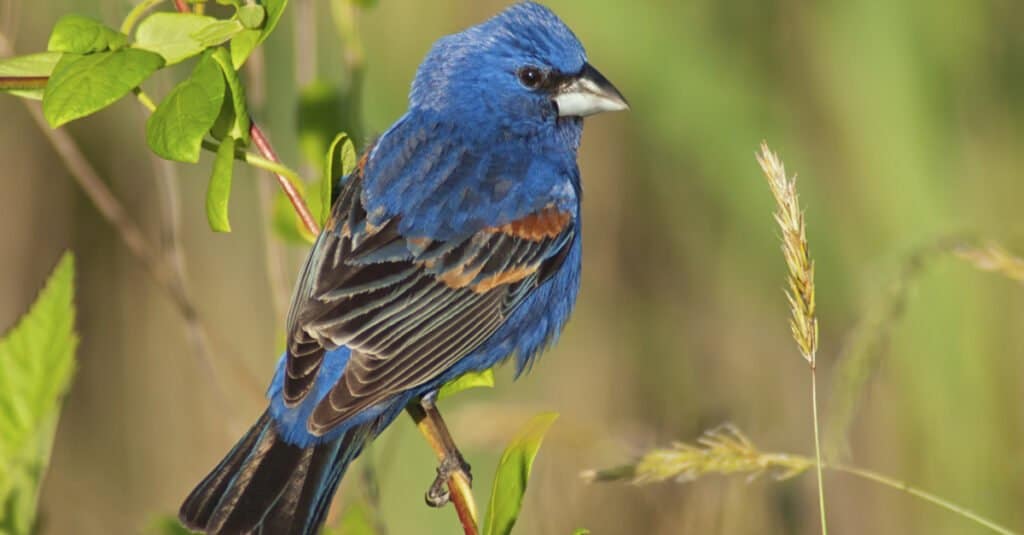
The
blue grosbeak
searches for food in low vegetation near woodland edges and brushy fields.
©Michael G. Mill/Shutterstock.com
Habitat and Range: Blue grosbeaks are breeding birds of the southern United States, including all of Texas. You will find them in woodland edges, hedgerows, and brushy fields, but any semi-open area with dense low vegetation will do.
Coloring: This species is vibrant blue, silver, chestnut, and black.
Calls: They emit rich warbles and metallic “chinks.”
Food and Foraging: Insects and seeds make up this bird’s diet. They forage alone or in pairs during the breeding season, and they search for food on the ground or in low vegetation. They may also catch their prey mid-air.
Backyard Tip: They enjoy shrubby areas, grains, and seeds.
12. Blue-Gray Gnatcatcher
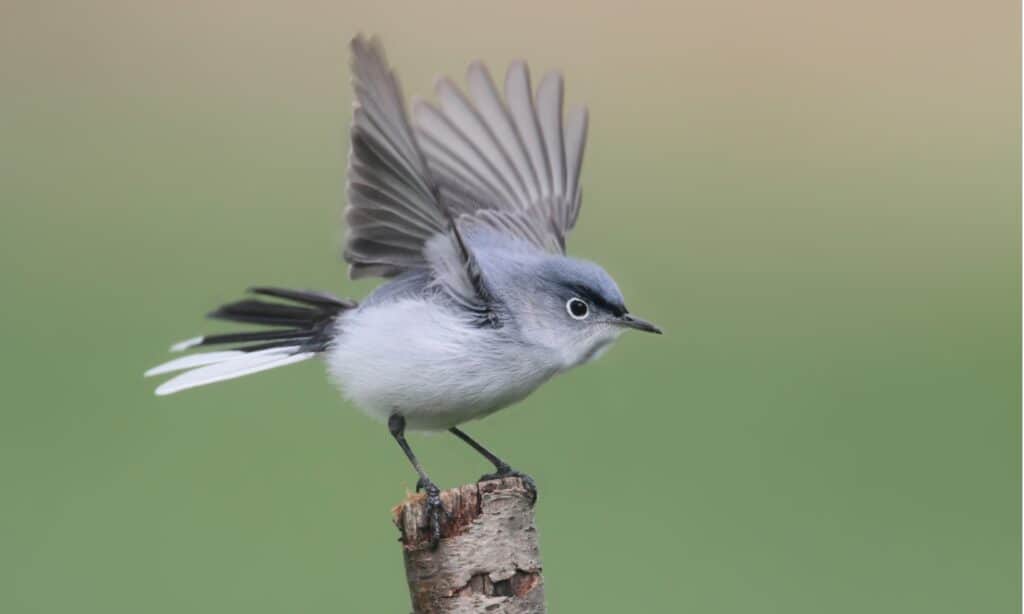
The blue-gray gnatcatcher is around 4-5 inches long and 3-4 inches high.
©iStock.com/SteveByland
Habitat and Range: Texas is a unique hub for the blue-gray gnatcatcher. They breed in the northeast, migrate through the northwest, winter in the southwest, and live year-round in the southeast. They live in open woods and thickets.
Coloring: They are bluish-gray, light gray, white, and black.
Calls: Their sounds are thin warbles and high-pitched nasal calls.
Food and Foraging: These insectivores actively forage in trees and shrubs, searching through leaves and twigs.
Backyard Tip: This species does not typically visit feeders. But they may be attracted to properties with mature deciduous trees.
Summary of 12 Blue Birds in Texas
Here’s a recap of the dozen beautiful blue birds that we looked at that can be found in Texas.
| Number | Bird Species | Coloring | Residency |
|---|---|---|---|
| 1 | Western Bluebird | Brilliant blue, rusty red, and gray | Lives in West Texas primarily during winter; some populations stay year-round |
| 2 | Mountain Bluebird | Blend of sky blue and deep blue, with a bit of white | Inhabit areas out west; Northwest Texas during winter |
| 3 | Painted Bunting | Vivid blue, red, green, and orange | Breeds across Texas, especially east Texas, avoiding the most northwestern parts of the state |
| 4 | Steller’s Jay | Light blue, dark blue, purple, and charcoal black | Inhabits the very western edge near Mexico and New Mexico borders (live year-round in the Guadalupe Mountains) |
| 5 | Lazuli Bunting | Brilliant blue, pumpkin, white, and black | Occasionally migrate through the western half of Texas |
| 6 | Purple Gallinule | Variety of colors, including sky blue, green, violet, red, indigo, and white | Breeds in far eastern side of Texas, near the Gulf of Mexico and the Louisiana border |
| 7 | Cerulean Warbler | Shades of sky blue, white, and black | Common migrant through eastern Texas, primarily along the Louisiana border |
| 8 | Woodhouse’s Scrub Jay | Mix of dusty blue and light gray | Lives year-round in scattered populations in southwest Texas near the Mexico border |
| 9 | Barn Swallow | Cobalt blue, tawny, cinnamon, dark brown, and white | Breeds throughout Texas during spring and summer |
| 10 | Belted Kingfisher | Bluish-gray, white, and chestnut | Year-round in northern Texas; Canadian breeding populations winter in southern Texas |
| 11 | Blue Grosbeak | Vibrant blue, silver, chestnut, and black | Breeds throughout Texas |
| 12 | Blue-Gray Gnatcatcher | Bluish-gray, light gray, white, and black | Live year-round in the southeast of Texas; breed in the northeast; migrate through the northwest; winter in the southwest |
The photo featured at the top of this post is © Danita Delimont/Shutterstock.com
Thank you for reading! Have some feedback for us? Contact the AZ Animals editorial team.






